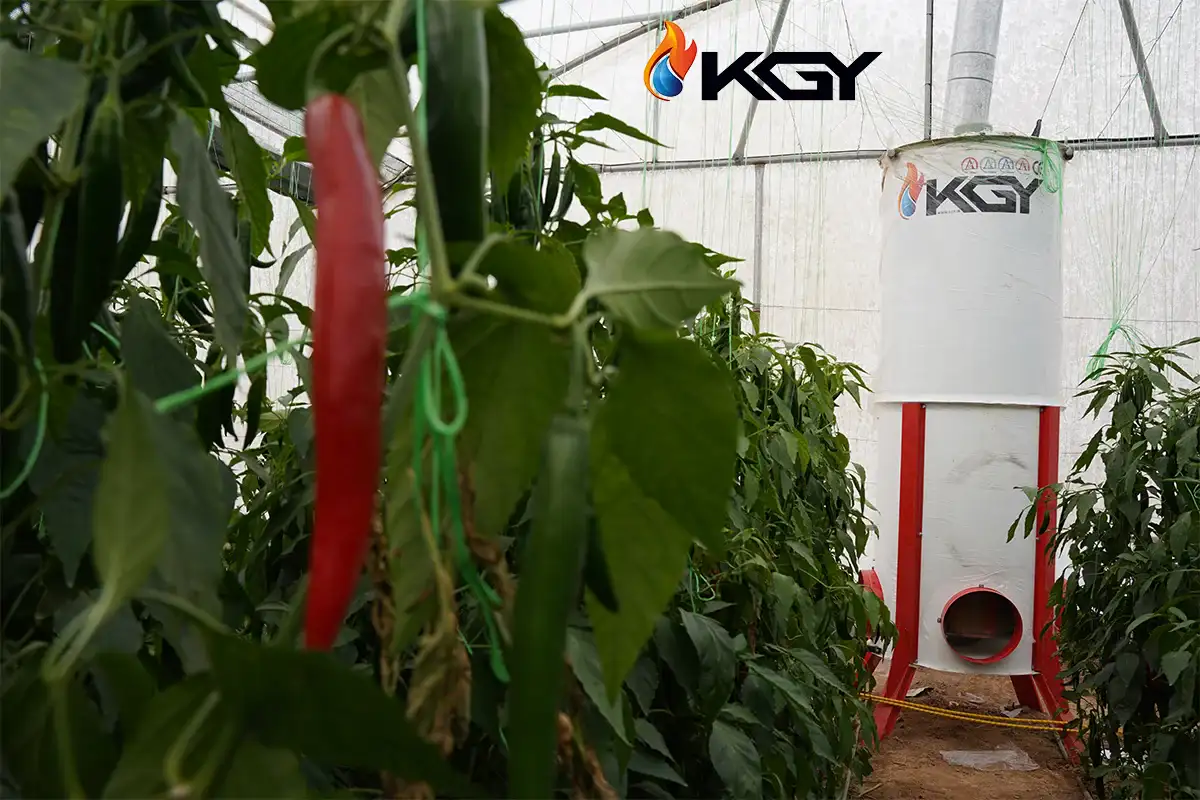When it comes to maintaining a thriving greenhouse environment, a reliable and efficient heating system is essential. Properly maintaining the temperature inside the greenhouse is crucial for the optimal growth of your plants and protecting them from extreme weather conditions. This article serves as your comprehensive guide to diverse greenhouse heating systems, each tailored to meet specific needs, climates, and preferences within the agricultural landscape.
Table of Contents
ToggleDifferent Types of Greenhouse Heating Systems:
Forced-Air Heating Systems:
Forced-air heating systems, leveraging fans to distribute warmth evenly, ensure consistent temperatures and uniform plant growth. These systems, powered by versatile energy sources like gas, gasoil and electricity, stand out for their efficiency in maintaining optimal greenhouse conditions.
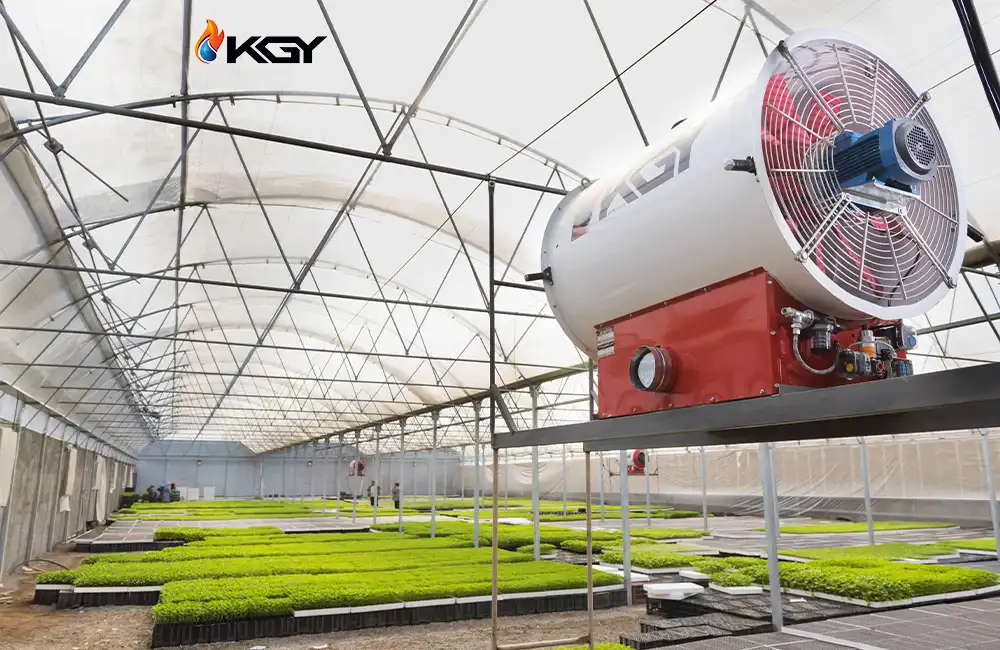
Pros:
- Rapid and uniform heat distribution.
- Can be powered by various energy sources, including gas, gasoil, electricity, or biomass.
- Suitable for large greenhouse structures.
Cons:
- Initial installation costs can be high.
- Regular maintenance is required for fans and ducts
Hot Water and Steam Heating Solutions:
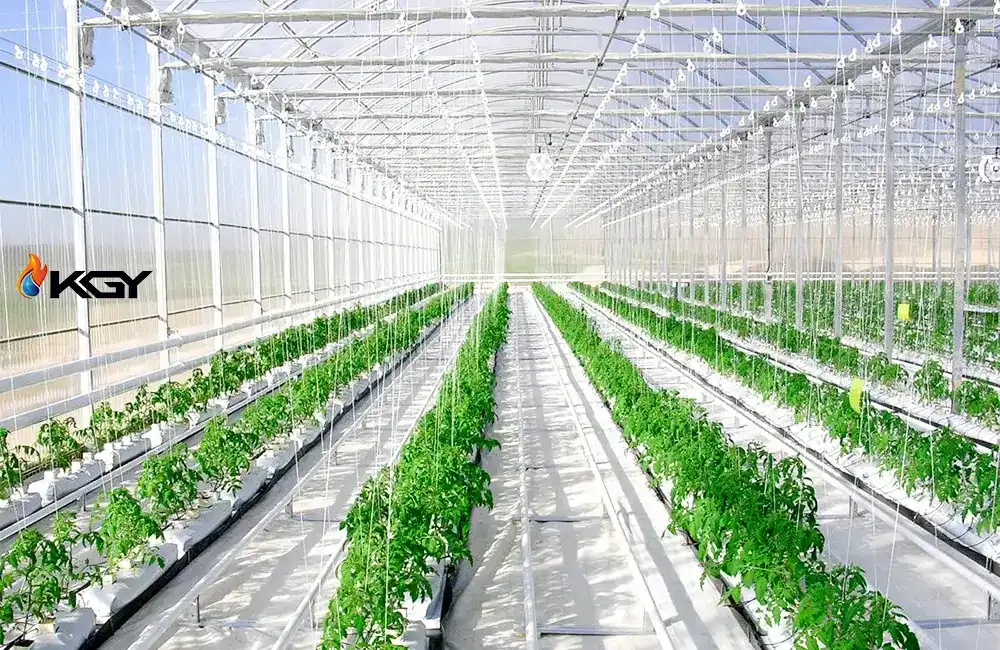
Hot water and steam heating systems, circulating warmth through pipes, offer precise temperature control suitable for larger greenhouses. These adaptable systems, fueled by gas, oil, or renewable sources, provide a reliable foundation for maintaining optimal growing environments.
Pros:
- Energy-efficient and cost-effective in the long run.
- Can be used in combination with various energy sources.
- Suitable for maintaining consistent temperatures.
Cons:
- Initial installation costs can be relatively high.
- Requires a well-designed piping system.
Radiant Heating Systems:

Radiant heating, utilizing infrared radiation to warm surfaces and objects, minimizes heat loss and offers energy-efficient solutions for smaller to medium-sized greenhouses. Whether powered by gas, electricity, or hot water, radiant heating ensures effective temperature regulation.
Pros:
- Efficient and direct heat transfer to plants and surfaces.
- Lower energy consumption compared to forced air systems.
- Suitable for greenhouses with high plant density
Cons:
- Higher upfront costs for installation.
- May not provide as uniform temperature distribution as forced air systems.
Sustainable Biomass Heating Systems:
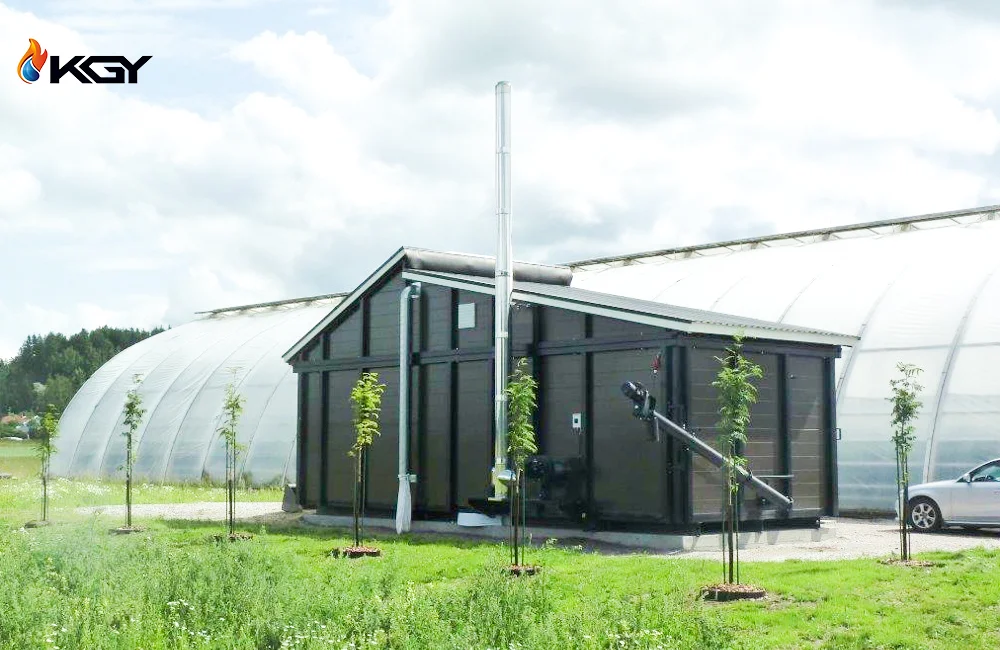
Biomass heating systems, utilizing organic materials for heat generation, present eco-friendly alternatives for greenhouse operations. By reducing reliance on fossil fuels, biomass heating proves to be a cost-effective and renewable energy solution for various greenhouse sizes.
Pros:
- Utilizes renewable energy sources.
- Can be cost-effective, especially if local biomass resources are abundant.
- Lower greenhouse gas emissions compared to fossil fuels.
Cons:
- Requires a steady supply of biomass fuel.
- Initial installation costs may be higher than some conventional systems.
Solar-Powered Heating Solutions:
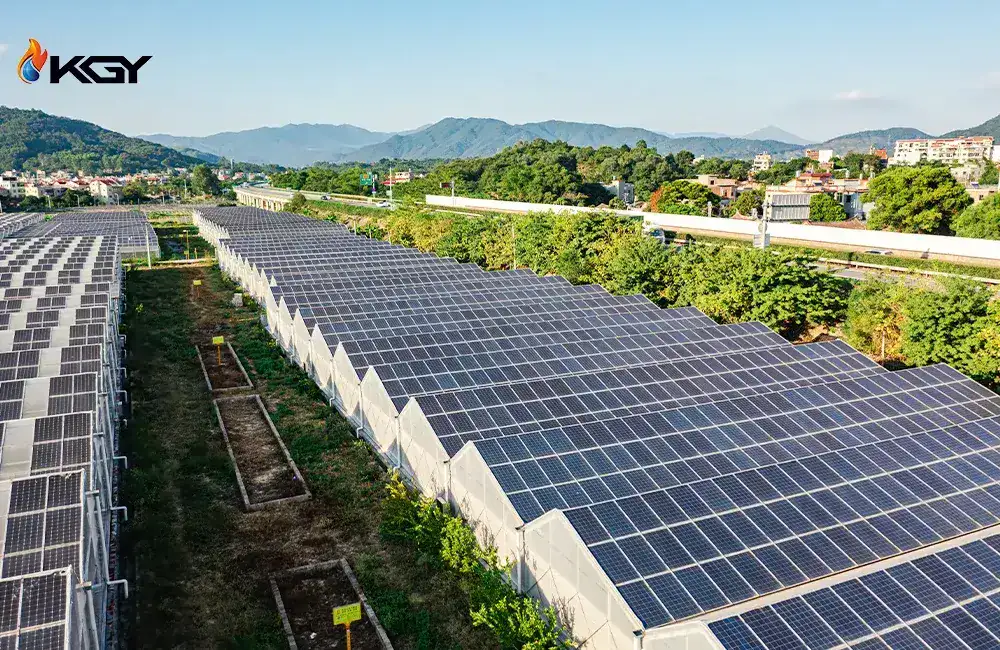
Solar heating systems harness the sun's energy to maintain optimal greenhouse temperatures. While requiring an initial investment, these environmentally friendly solutions prove cost-effective in the long run, aligning with sustainable and renewable energy practices.
Pros:
- Utilizes renewable energy and reduces operating costs.
- Environmentally friendly with low greenhouse gas emissions.
- Can be effective in sunny climates.
Cons:
- Dependent on sunlight availability, may not provide consistent heat on cloudy days.
- Higher initial investment for solar heating systems.
Geothermal Heating Solutions:
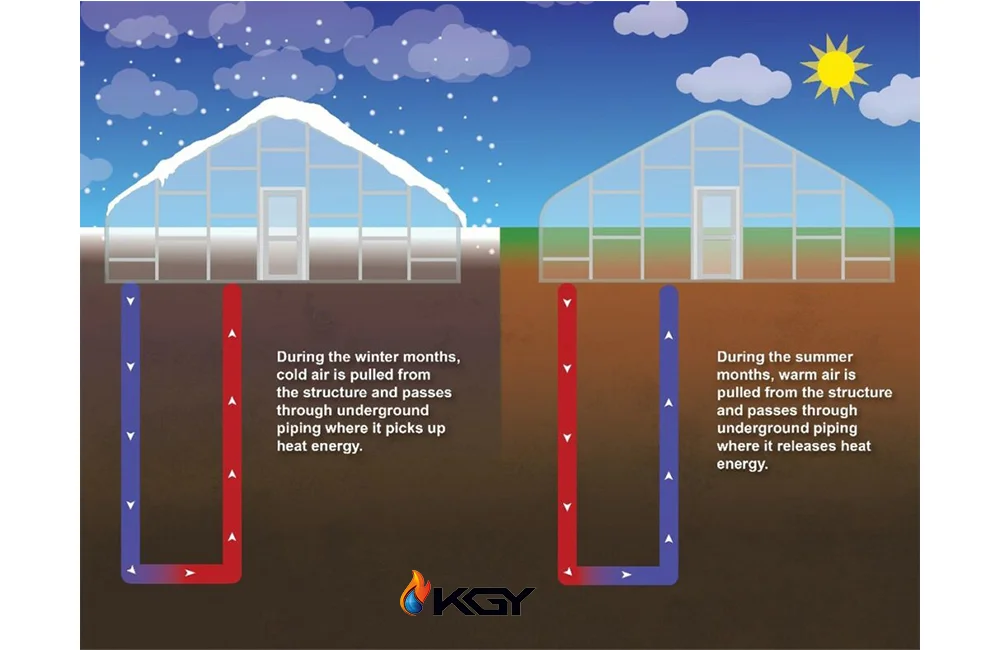
Geothermal heating taps into the Earth's natural heat, offering a consistent and reliable energy source. Ideal for stable ground temperature regions, geothermal heating systems provide sustainable solutions with minimal environmental impact.
Pros:
- Relies on renewable and sustainable geothermal energy
- Provides stable and favorable conditions for plant growth
- Produces fewer greenhouse gas emissions
Cons:
- Upfront installation costs can be relatively high
- Feasibility depends on the geological conditions of the site
- Obtaining permits may involve regulatory challenges
Efficient Electric Heating Systems:

Electric heating systems, powered by electrical resistance, offer easy installation, low maintenance, and precise temperature control. While operational costs may be higher, technological advancements enhance energy efficiency for these versatile and adaptable systems.
Pros:
- Clean and easy to control.
- No fuel storage or combustion byproducts.
- Well-suited for smaller greenhouse setups.
Cons:
- Can be more expensive to operate compared to other systems.
- Limited capacity for larger greenhouse structures.
Advantages of Hot Air Furnace in the Greenhouses:
Among the various heating solutions available, the hot air furnace stands out as a powerhouse of benefits, revolutionizing the way we nurture and grow our plants. Let's delve into the unique advantages that make hot air furnaces an indispensable tool in greenhouse horticulture.

Uniform Temperature Distribution:
The hot air furnace excels in maintaining a consistent and uniform temperature throughout the greenhouse. By evenly distributing warm air, it creates an optimal environment for plant growth, ensuring every corner of the greenhouse receives the warmth it needs.
Precision Control for Plant Health:
Unlike traditional heating methods, hot air furnaces offer precise temperature control. This level of accuracy is crucial for promoting the health and development of plants, allowing growers to tailor the climate to specific crop requirements, ultimately resulting in higher yields and better-quality produce.
3. Energy Efficiency and Cost Savings:
Hot air furnaces are renowned for their energy efficiency. With advanced combustion and heat exchange technologies, they maximize the utilization of fuel, leading to reduced energy consumption and operational costs for greenhouse owners. The economic benefits extend to long-term sustainability and profitability.
Quick Response to Temperature Changes:
The responsive nature of hot air furnaces enables them to adapt swiftly to temperature fluctuations. This agility is particularly beneficial in regions with unpredictable weather patterns or sudden drops in temperature, ensuring that the greenhouse environment remains stable and conducive to plant growth.
Versatility in Fuel Options:
Hot air furnaces offer versatility in terms of fuel sources, accommodating a range of options such as natural gas, propane, gasoil or even renewable energy sources. This flexibility allows growers to choose the most cost-effective and environmentally friendly fuel option for their specific needs.
Reduced Risk of Disease and Pests:
The uniform distribution of warm air created by hot air furnaces contributes to a drier and less humid environment within the greenhouse. This not only reduces the risk of common plant diseases but also discourages the proliferation of pests, fostering a healthier growing environment.
Extended Growing Seasons:
Hot air furnaces extend the growing season by providing the warmth needed to protect plants from cold weather. This extension allows for year-round cultivation, giving greenhouse operators the ability to harvest multiple crops and capitalize on market demands regardless of external climate conditions.
KOOLAK GOSTAR YAZD (KGY), Pioneer of Greenhouse Heating Solutions
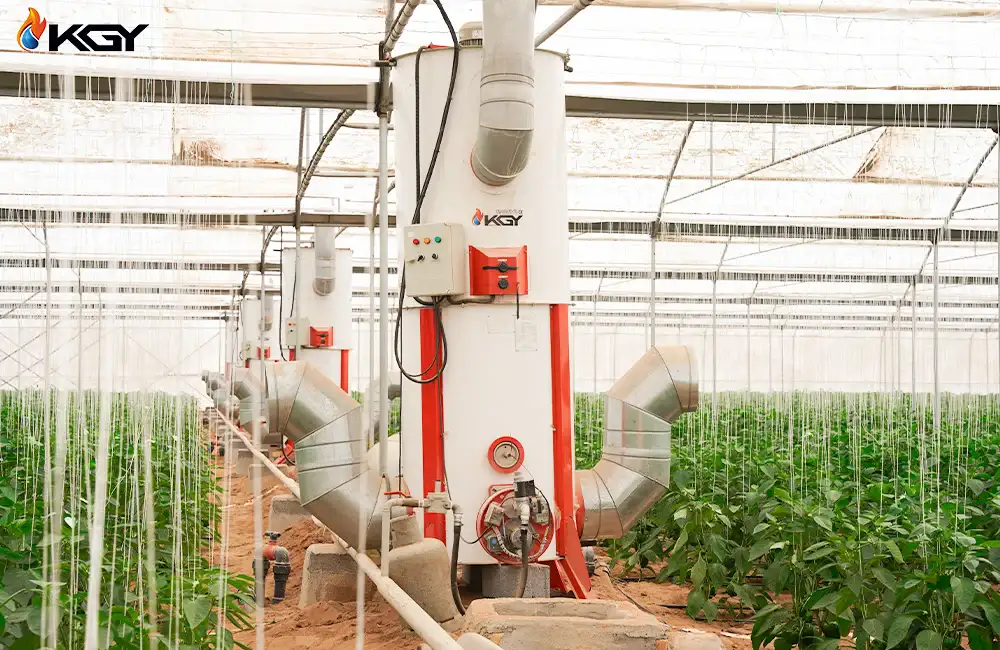
KGY has emerged as a trailblazer in the realm of greenhouse heating systems, offering state-of-the-art solutions designed to elevate agricultural practices. With a commitment to excellence and a focus on sustainability, the company has solidified its position as a trusted producer of top-notch greenhouse heaters.
Key Features of KGY Greenhouse Heaters:
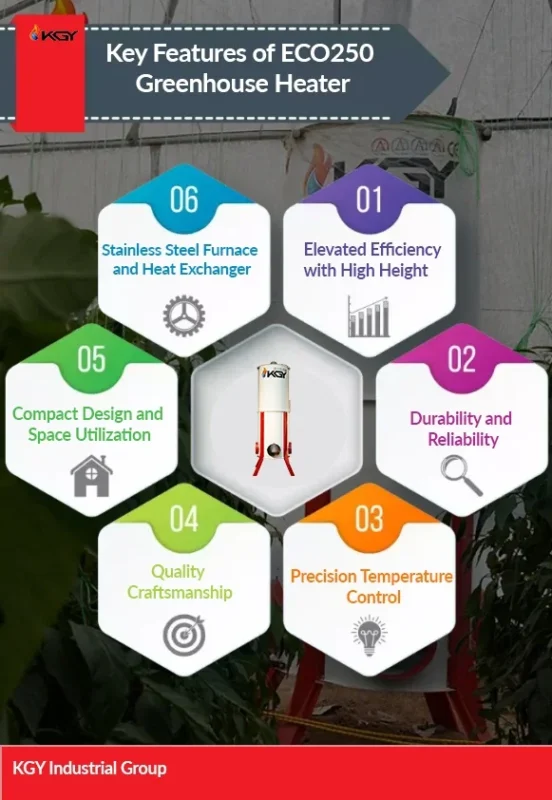
Elevated Efficiency with High Height:
One standout feature of the ECO250 is its remarkable height, which serves a dual purpose. Not only does it enhance the heater's efficiency by allowing the hot air to circulate more effectively, but it also helps in maintaining an even temperature throughout the greenhouse. This unique design ensures that every nook and cranny receive the warmth it needs, fostering optimal growing conditions. This heater can achieve efficiencies up to 94%, by recovering heat that would otherwise be lost through the flue
Durability and Reliability:
Built to withstand the rigors of agricultural environments, KGY heaters are known for their durability and reliability. The robust construction and quality materials used in their production guarantee longevity, providing greenhouse owners with a dependable heating solution.
Precision Temperature Control:
Maintaining an optimal temperature is crucial for the health and growth of plants, ECO250 heater boasts precision temperature control features, ensuring a stable and conducive environment for plants to thrive, regardless of external weather conditions.
Quality Craftsmanship:
When it comes to greenhouse heating systems, durability is non-negotiable. KGY prides itself on using high-quality materials in the construction of its heaters. The robust build ensures longevity, making this heater a reliable investment for the long term. With a commitment to quality craftsmanship, KGY sets the standard for greenhouse heating solutions.
Compact Design and Space Utilization:
The compact size of the ECO250 allows for efficient space utilization within the greenhouse. Unlike larger heating systems that might require extensive installation and modification, the ECO250 fits seamlessly into your existing setup. This space-efficient design not only reduces installation costs but also ensures that every inch of your greenhouse is utilized for plant cultivation.
Stainless Steel Furnace and Heat Exchanger:
The material and design of the furnace and heat exchanger play a crucial role in achieving high efficiency. Stainless steel furnace and heat exchanger, due to their excellent thermal conductivity and resistance to corrosion, contribute to maximizing heat transfer.
7. Integrated Controls and Monitoring:
This heater is equipped with sophisticated control systems that allow users to monitor and adjust settings remotely. This level of automation ensures that the heater operates optimally at all times.
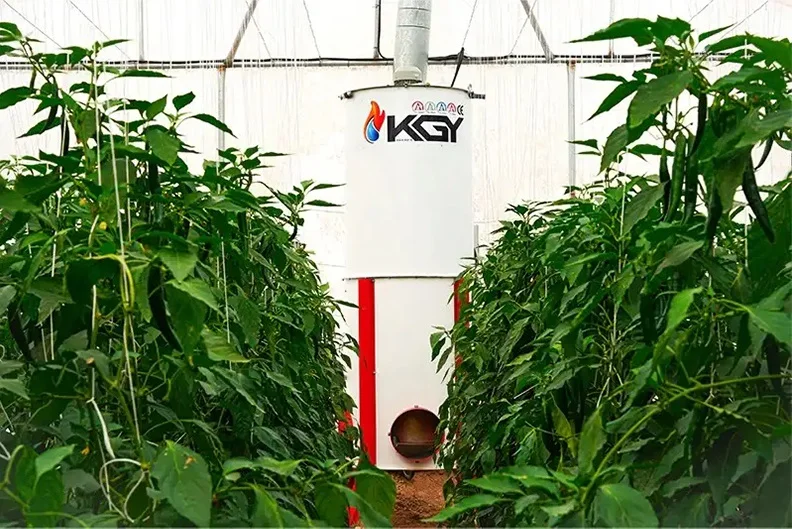
In conclusion, the ECO250 heater from KOOLAK GOSTAR YAZD is not just an upfront investment in quality heating; it's a strategic move towards long-term cost-effectiveness. Its energy efficiency, optimal heat distribution, compact design, durability, versatility, and the protection it provides against plant loss make it a financially prudent choice for greenhouse owners looking to balance performance with cost savings.Feel free to reach out to the KGY sales team for expert advice. The KGY sales engineering team will assess your environment thoroughly and recommend the ideal heating system. All KGY products come with a 1-year warranty, and our commitment extends with a 10-year after-sales service

